Do you frequently find yourself with extra leafy greens? Maybe from your garden, indoor growing setup, farmers’ market find, or from your weekly shopping from the local grocery store?
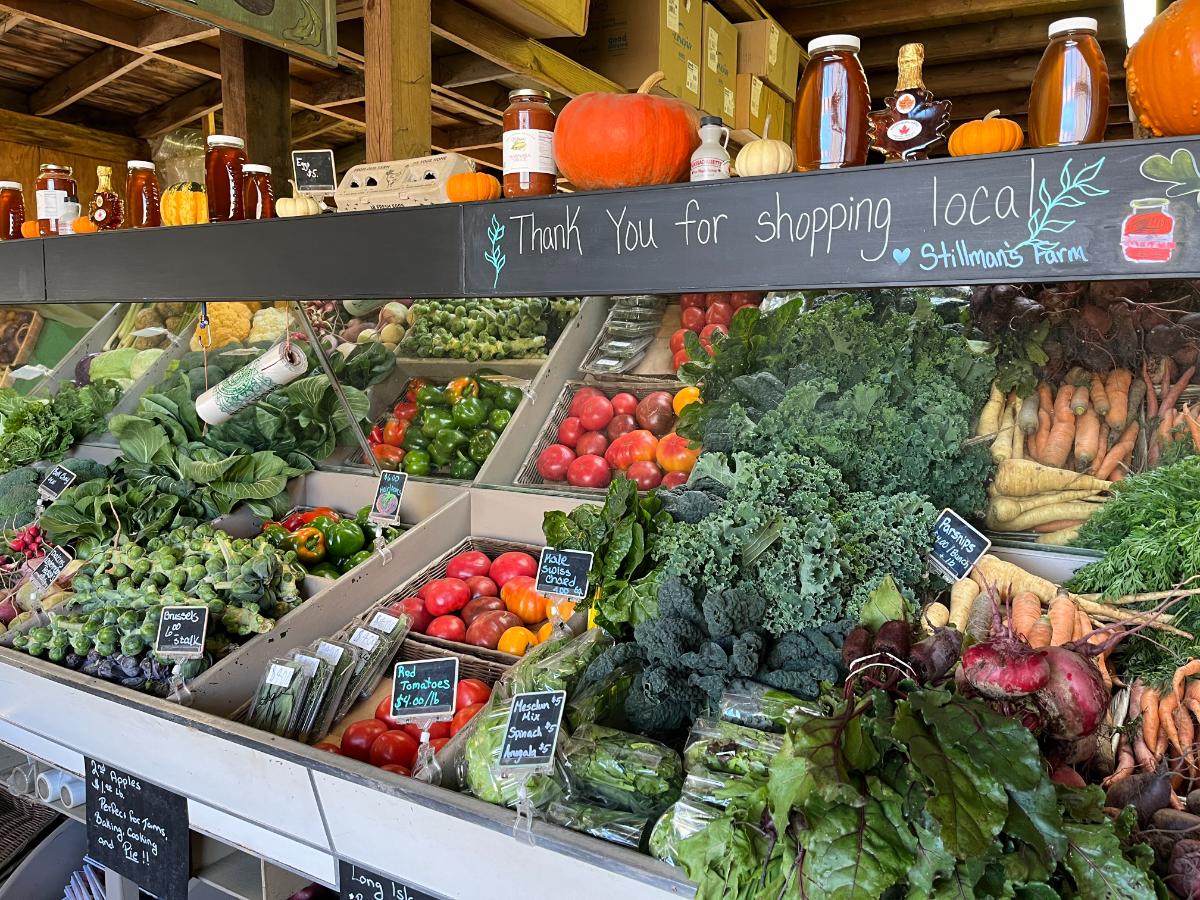
Wherever they come from, it seems like we often have more greens than we end up using.
With the price of food and the amount of time and energy it takes to grow it, it’s a shame to let things go to waste. But there are some surprisingly easy ways to save or preserve extra greens.
You can even do it a little at a time, so you can save anything from a large quantity to just the scraps of what’s left after your week of meals.
Jump to:
What Types of Leafy Greens Are Worth Saving?
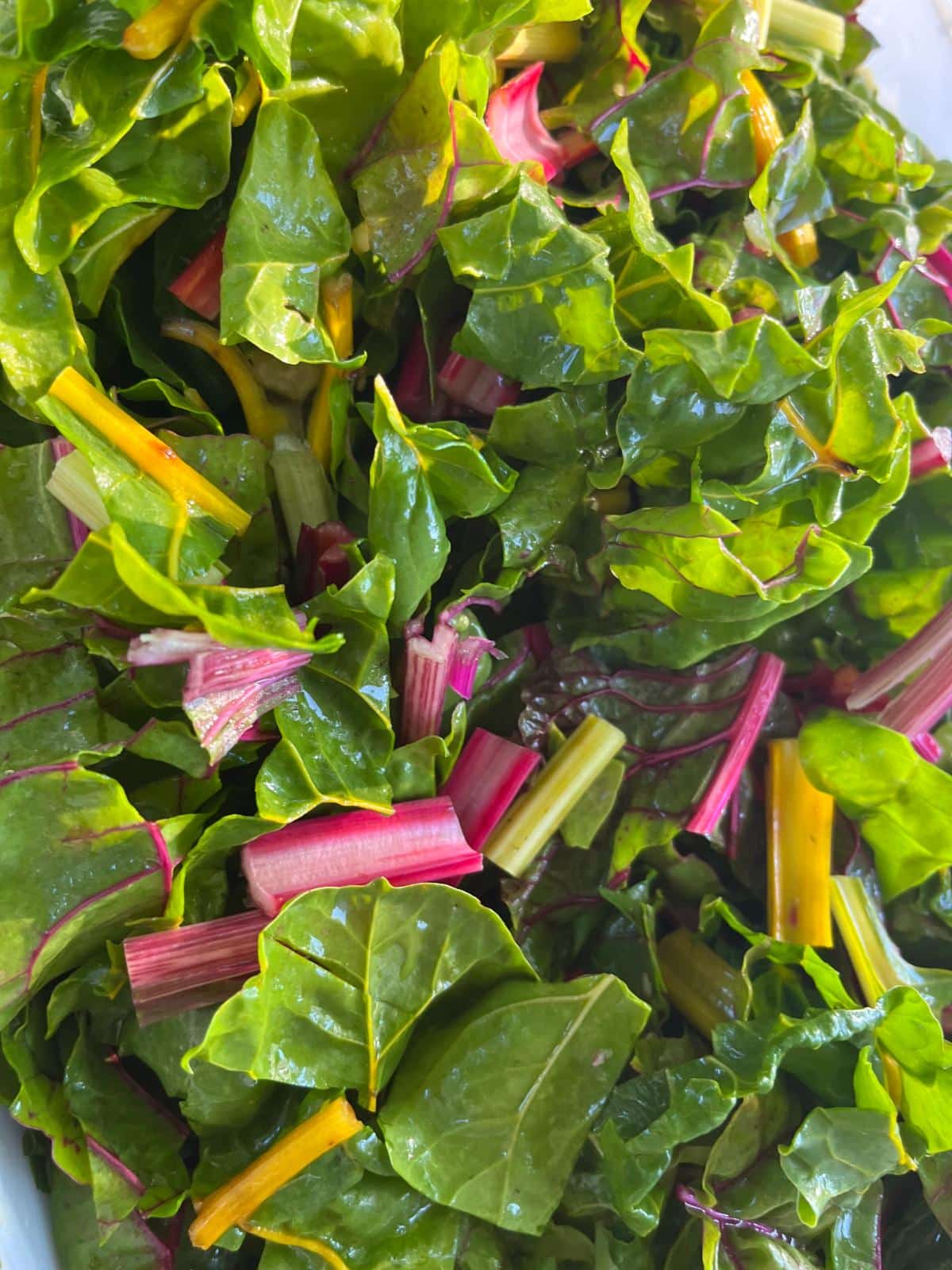
Almost all green leafy vegetables are worth saving, and one or more of these methods will work well for them.
Some greens to keep include:
- Spinach
- Kale
- Swiss chard
- Greens from root vegetables like carrots and beets
- Turnip greens
- Mustard
- Bok choy
- Napa cabbage
- Cabbage
- Collard greens
- Dandelion greens or other foraged greens and edible “weeds”
- Romaine lettuce
- Other sturdy, leaf-type lettuce
- Lettuce or greens spring mix (the type you’d use for salads)
- Radicchio
- Cress/watercress
- Mesclun/mesclun mix
- Arugula
- Edible leaves of plants, including broccoli and cauliflower leaves
Some of these may surprise you. Like lettuce, for example.
Sturdy, nutrient-dense lettuce varieties like romaine and leaf lettuce are good for limited preservation methods (namely super green powders).
Other greens are good for all of the methods listed here.
Broccoli and cauliflower leaves may surprise you as well. We think of these as waste or compost when, in fact, they are edible and have some good uses.
Greens not worth saving
- Iceberg lettuce and similar watery head lettuces
There are a few types of greens that won’t preserve well no matter what method you use. Namely, iceberg lettuce and similar watery, juicy greens. However, iceberg lettuce doesn’t have a lot of nutritional value to speak of, so it’s not the loss that these other greens on this list are.
Four Simple and Useful Ways to Save Extra Greens
Use more of what you grow, save money, reduce food waste, and reduce trash -- it’s an all-around win with these fast, simple techniques.
Here are four good ways to give extra greens new life, along with a list of suggested greens for each method.
1. Dehydrate
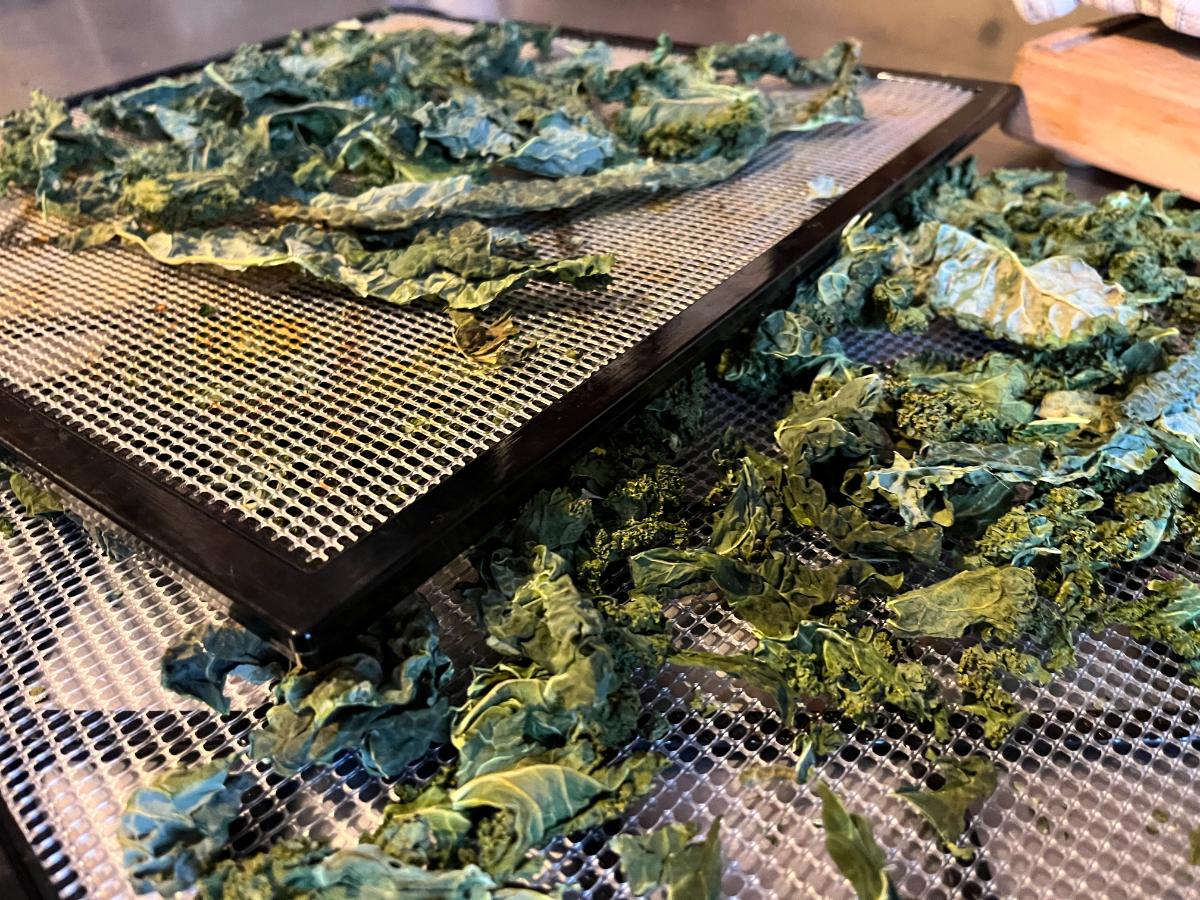
All sorts of greens are easy to dehydrate. For the most part, they can be dehydrated straight from fresh, without blanching. Some of the “heftier” greens can benefit from blanching before dehydrating.
One of the rules of thumb is that if you would only eat it if it were cooked first, you should give the greens a quick blanch for about one minute.
If it is something that you can eat, either fresh or cooked, you do not need to blanch the greens, but you can if you prefer. Blanching often helps hold the color better. It also stops enzyme actions.
If it is something that you don’t usually cook before eating, you do not need to blanch it.
Dehydrate leafy greens at a low temperature of 125℉ (51.6℃). Greens take between three and five hours to dry. They are done when they are completely dry and crispy or crumbly.
Best greens to use for dehydrating:
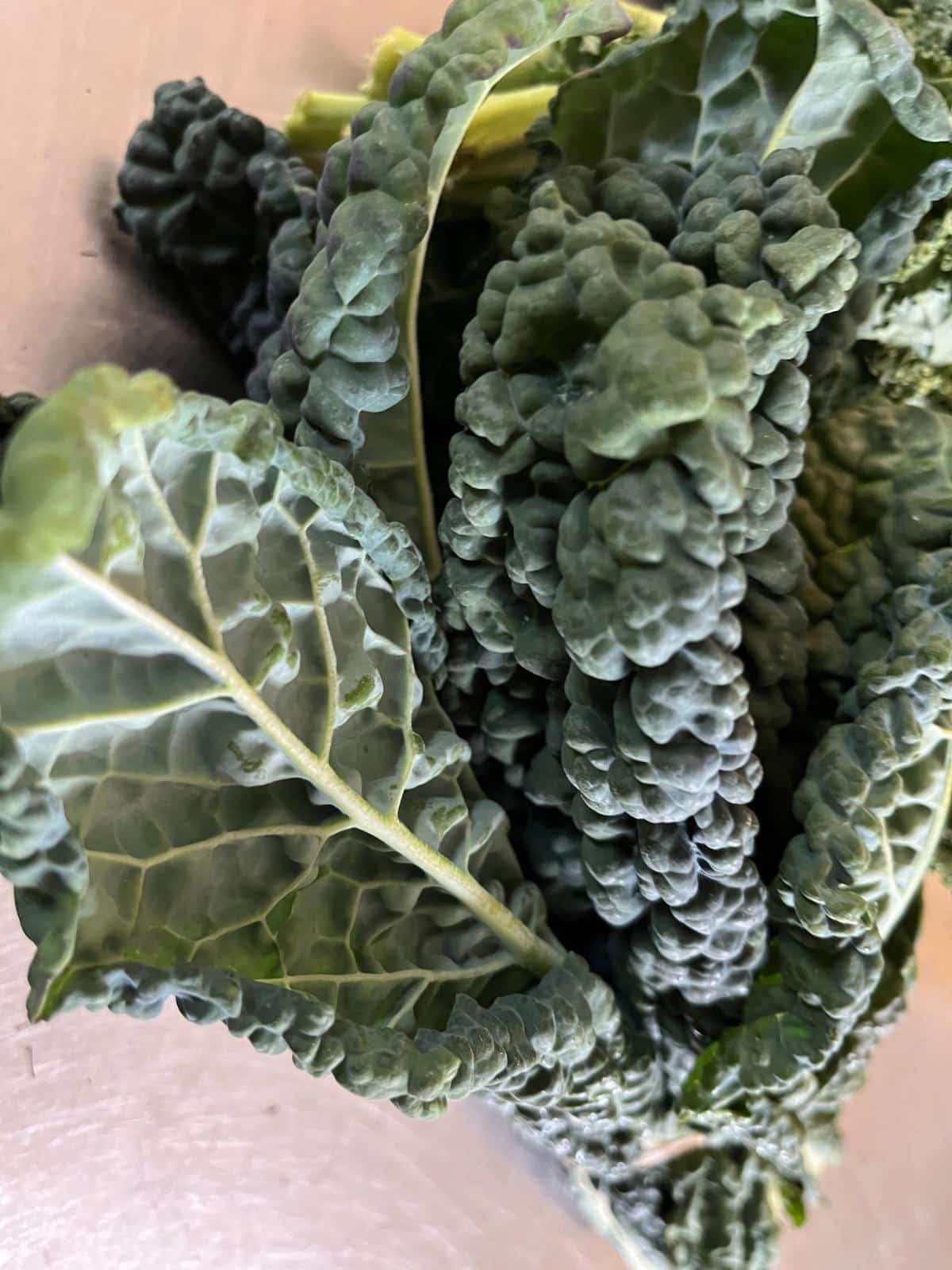
- Most any greens, including sturdy lettuce varieties
- The entire list above can be dried
2. Powder
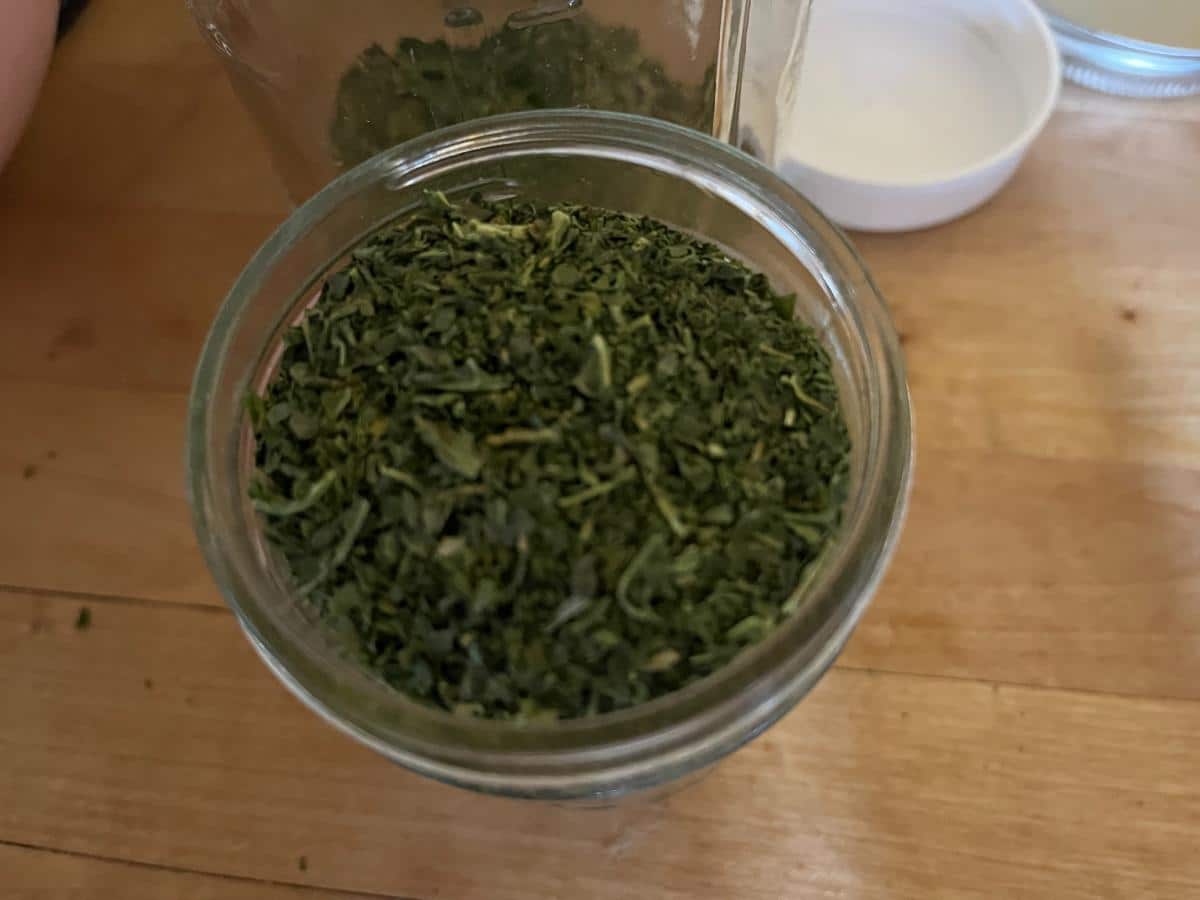
You can make your own nutrition-boosting “Super Green” powder just by dehydrating your leftover greens and then pulverizing them into powder.
Simply follow the instructions above to start.
After the greens are done drying, let them cool completely.
When cool, pulverize the crumbling greens by using a blender, food processor, herb grinder, or coffee grinder. Fill to about one-half full with dried greens, pulverize, and then work through your batches until finished.
You can make the powder as rough or as fine as you like.
Best greens to use for powdering:
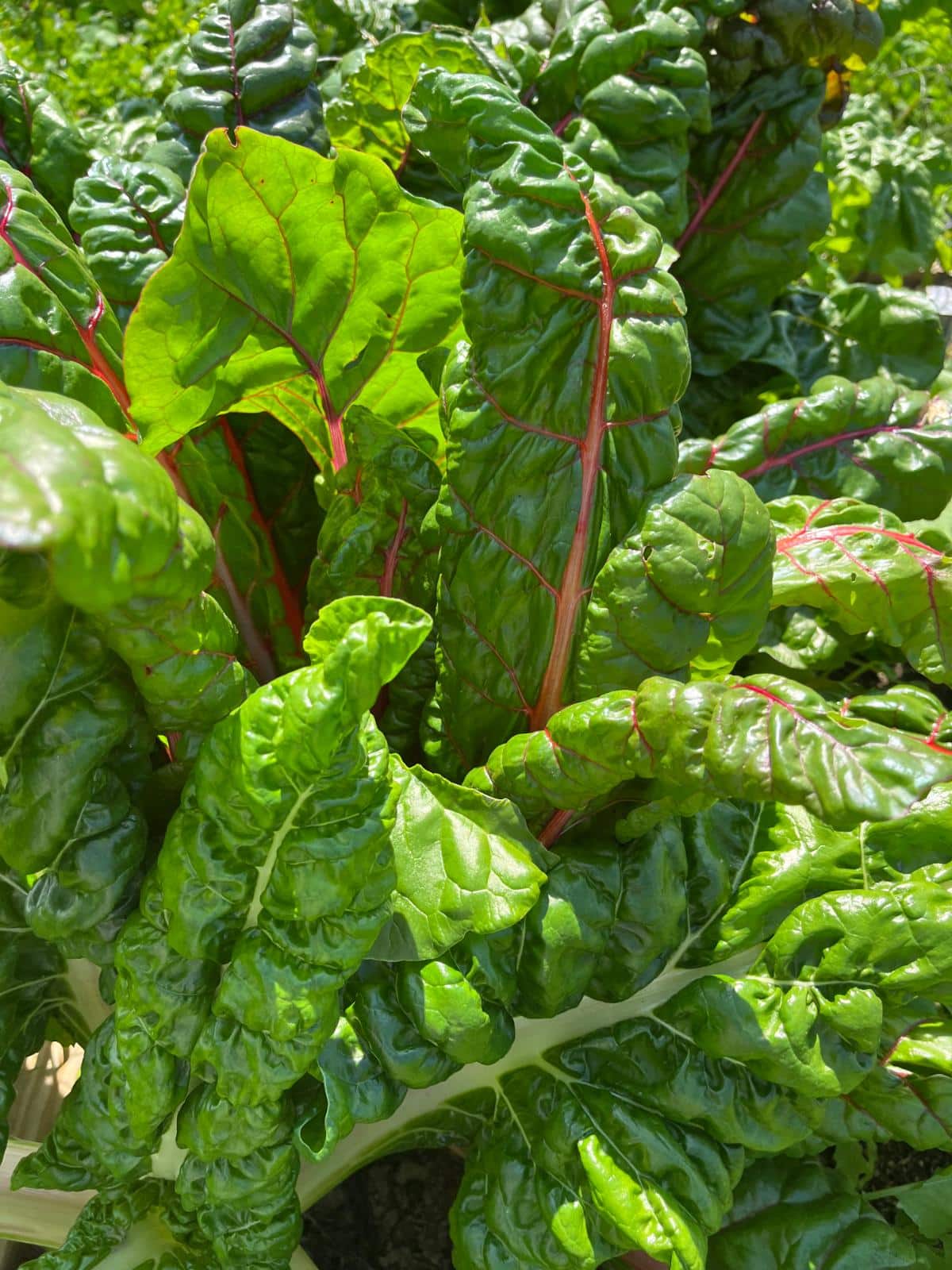
- Most any dried greens; the entire list above can be used for super green powder
- Feel free to mix any different types of greens to make your powder
- You can make a separate powder for culinary use for savory dishes. This is the best way to use spicy greens like mesclun, cress, radicchio, arugula, or mustard
- If you plan to use your super green powder in beverages, smoothies, or other milder dishes, make a powder that focuses on milder flavored greens that will blend in well. Kale, spinach, and several others are good for this use
3. Make Cooking or Flavoring Cubes or Cubes for Smoothies
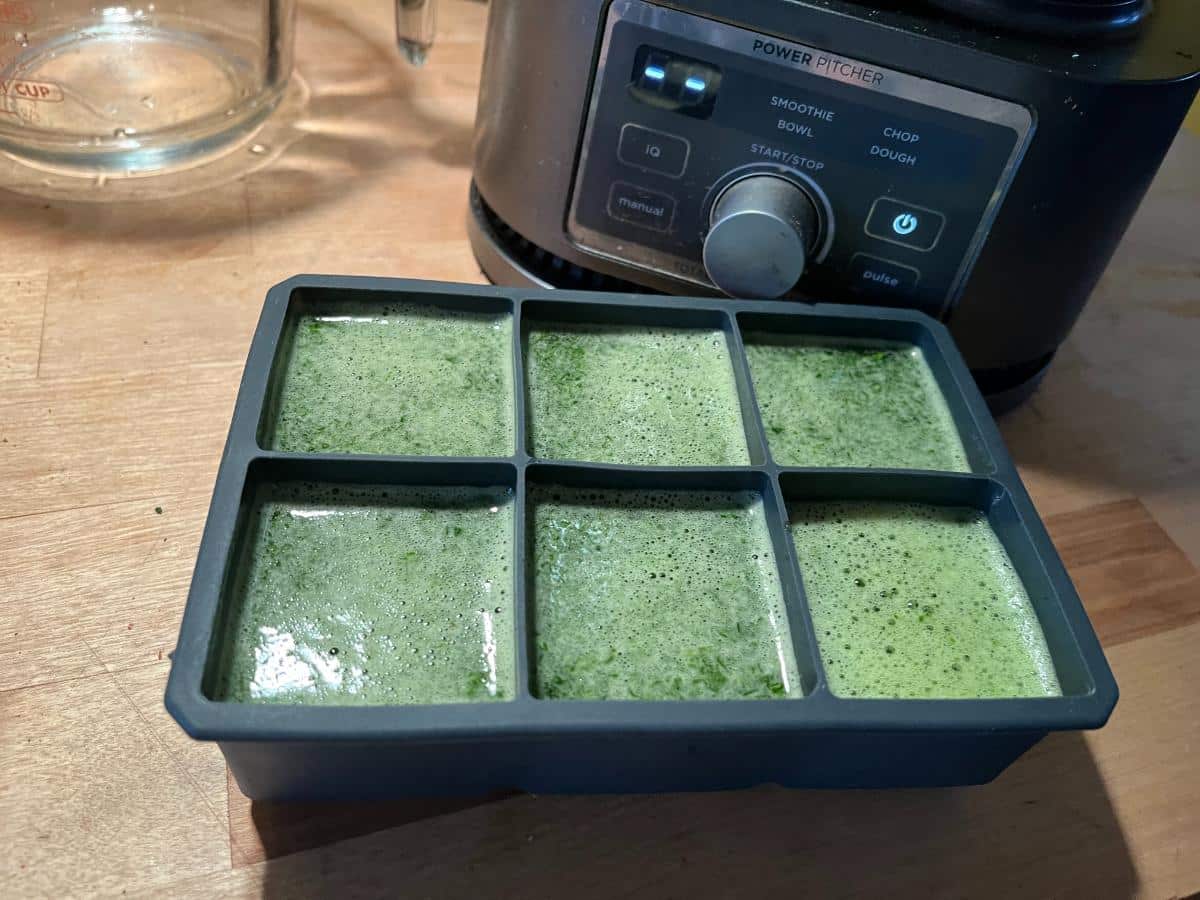
You can make frozen cubes of greens that can be used for cooking or in sauces, pasta, drinks, and smoothies.
All you need to do is remove any long, tough stems. (Thin stems are fine as they will blend in the process; if you would eat the stem, leave it.)
- Put the cleaned leaves in a blender.
- Add water up to about ⅓ of the way up the greens (so no covering the leaves -- just enough to help the leaves move and blend down)
- Blend for 30 seconds
- Check the greens; if they’re ground enough, you can stop here
- If the greens need more blending, blend for up to another 30 seconds
- For most greens, you don't usually want to blend them for more than a minute -- you want some bulk and fiber left
- Spoon the blended greens into ice cube trays
- Freeze
- Remove from the freezer when completely frozen, then remove and store in a freezer container or freezer bags
For a rough estimate, about one-third of a cup of fresh greens is in each finished frozen cube.
Best greens to use for cooking cubes:
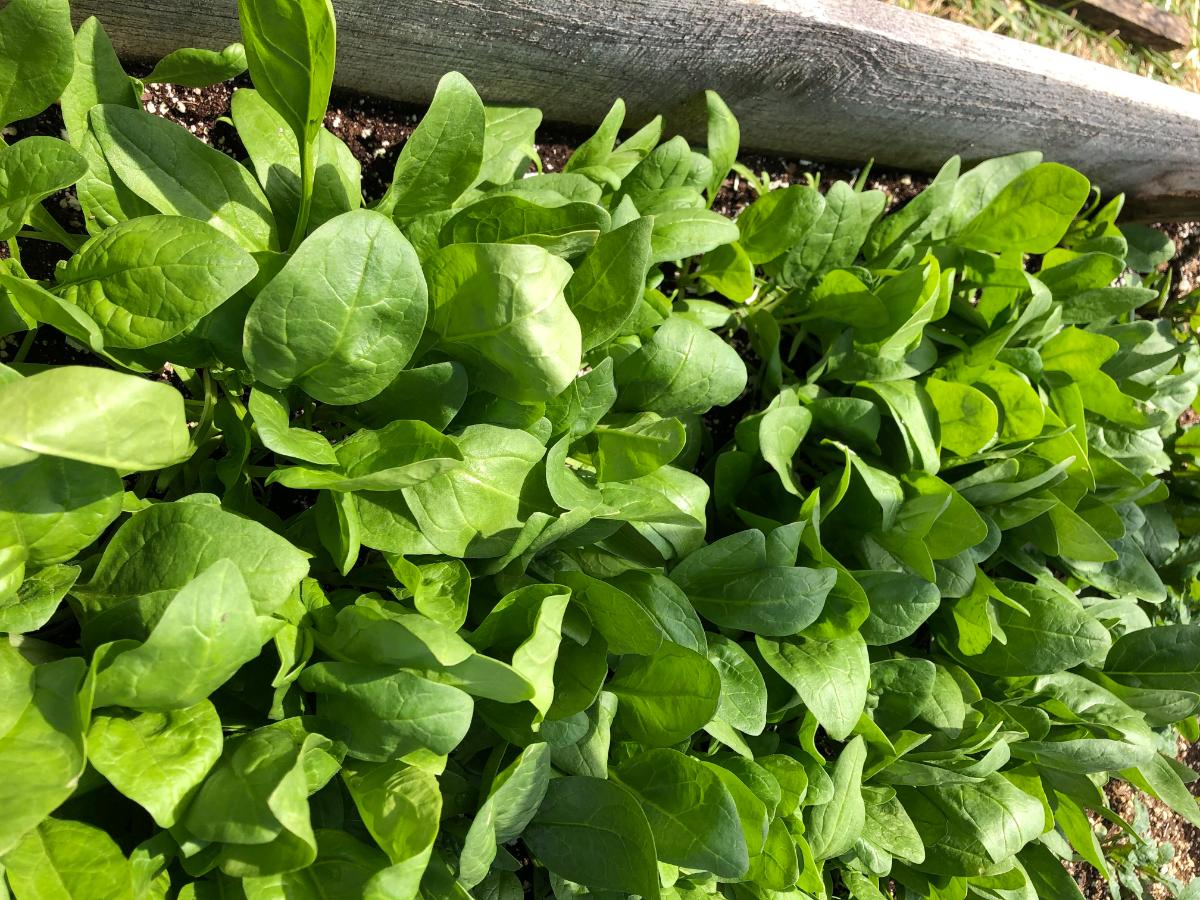
- Spinach
- Kale
- Most other types of greens, but avoid lettuces for the most part
- Savory greens can be stored this way and are handy to use in casseroles or to add a little spice to dishes
- Carrot and beet tops are good for seasoning, boosting nutrition in side dishes and soups, or making pestos
- Mix and match greens if you like them together and if you would use them together in whatever you plan to make with them
4. Build a Bag Freezer Bag

If you don’t have a lot of greens to save, these other methods may not be worth your time and effort. This is especially true of dehydrating a small amount of extra or leftover greens because they lose so much volume when they’re dried. (The yield of dried greens is only around ¼ what you started with.)
For small amounts of extra or leftover greens, simply collect them in a bag in the freezer. That’s it. Whenever you have extra greens, add them to the bag.
Your bag can be mixed or it can be of single types of greens. It all depends on how you plan to use them. Just keep them in mind when you’re making your scrap bags.
Of course, if you do have a large quantity of greens, you can freeze those, too. You can blanch them, which keeps them looking nicer and gives some protection from enzyme breakdown, but you can also just freeze the leaves from fresh (clean and dry -- pat dry, air dry on a cooking rack, or run through a salad spinner).
Frozen greens will be ideal for sauteed dishes, soups, casseroles, and almost any cooked dish. They are also nice to add when making vegetable stock.
Best greens to use for freezer or scrap bags:
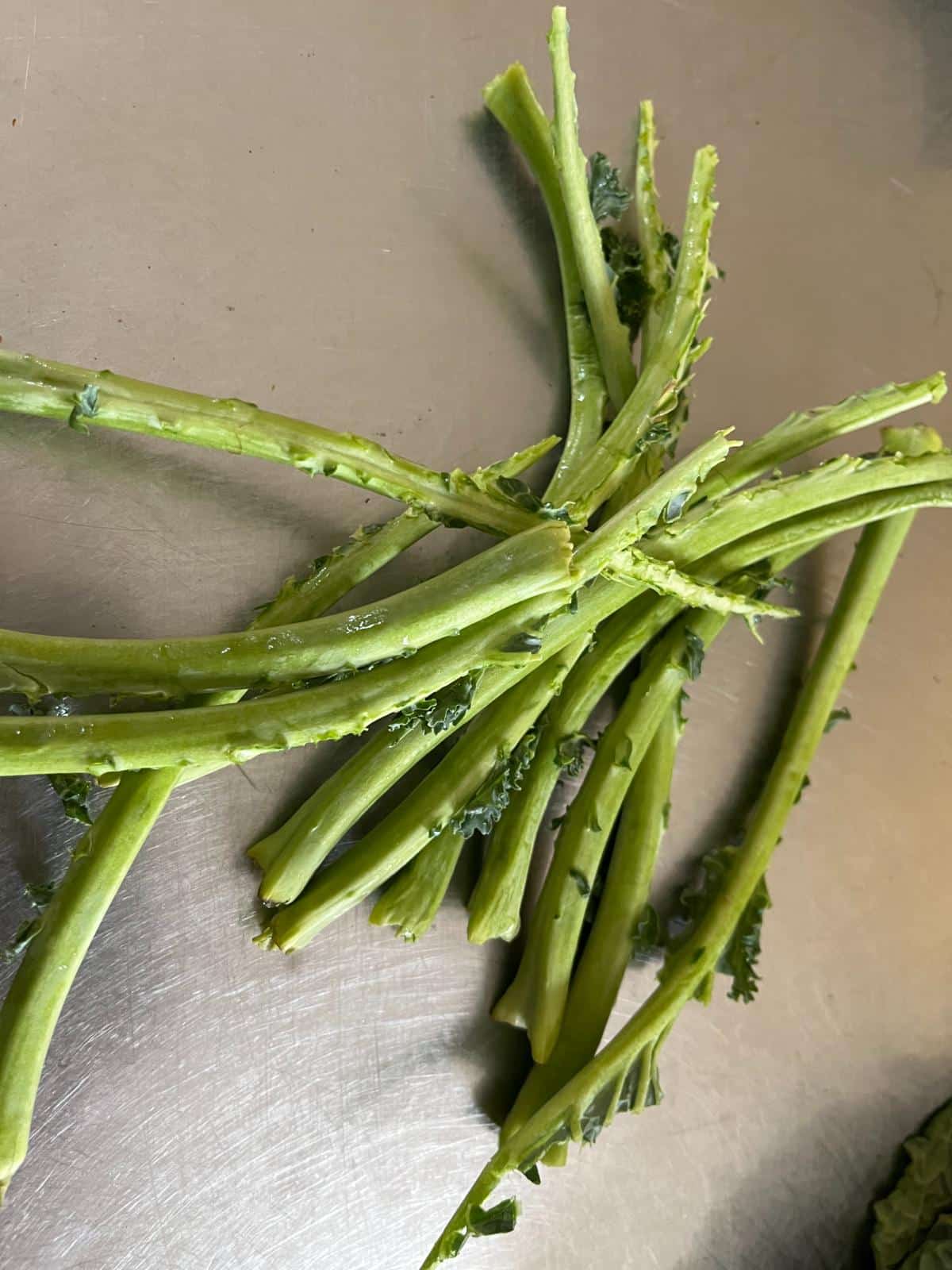
- Greens that you might cook from fresh
- Spinach
- Kale
- Collards
- Mustard
- Brassica leaves (broccoli, cauliflower, etc)
- Cabbage
- Napa cabbage
- Bok choy
Get Your Daily Dose of Good Greens -- Without Wasting!
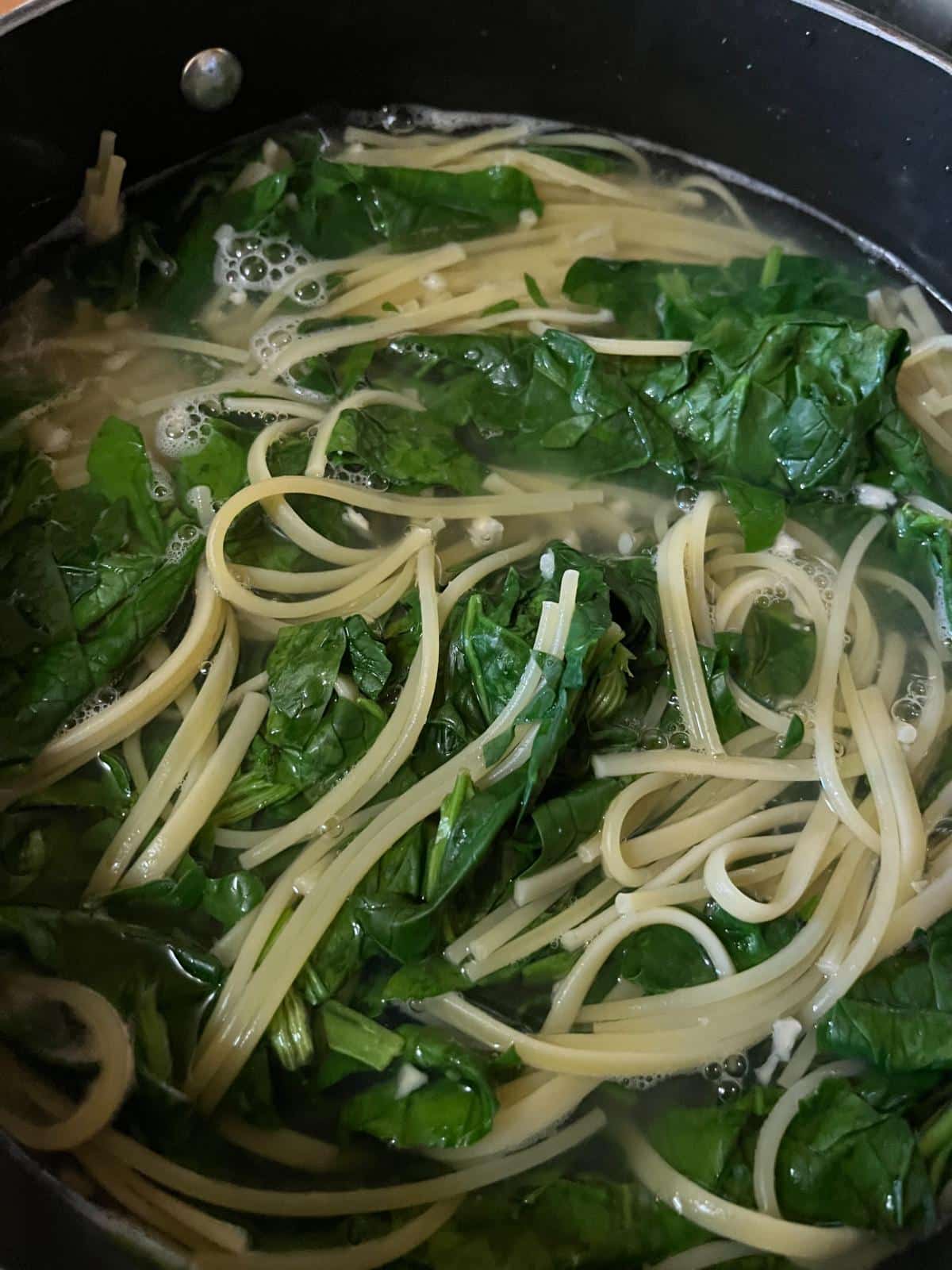
There are a lot of health benefits to consuming leafy greens in any form. Their high antioxidant levels and high vitamin and mineral content help to boost the immune system, provide essential vitamins and nutrients, lower blood pressure, reduce the risk of chronic disease and oxidative stress, and promote good eye and brain function.
That’s a lot of good for a bunch of little greens!
The preservation methods above help you turn what is otherwise bound to become food waste into something useful. They give you new and varied ways to use your good greens. And ways to spice up your kitchen and cooking, too!

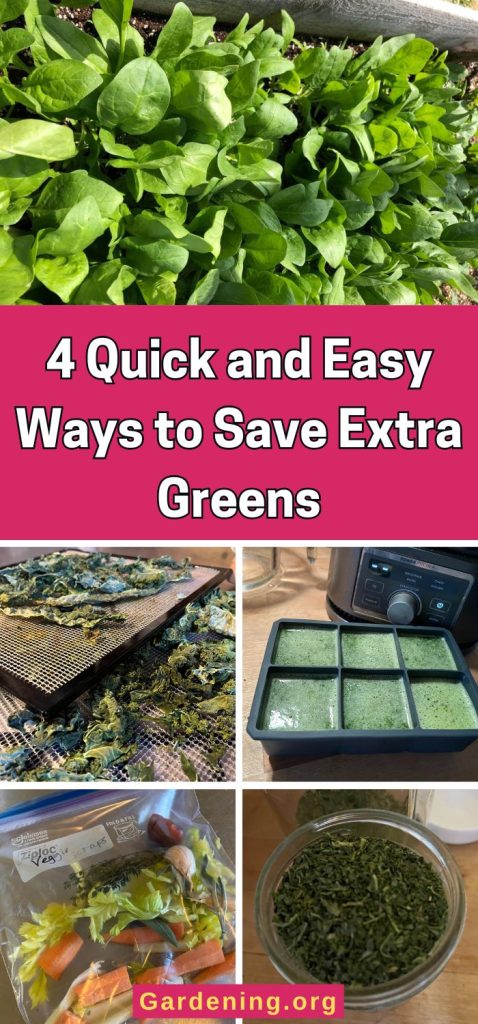
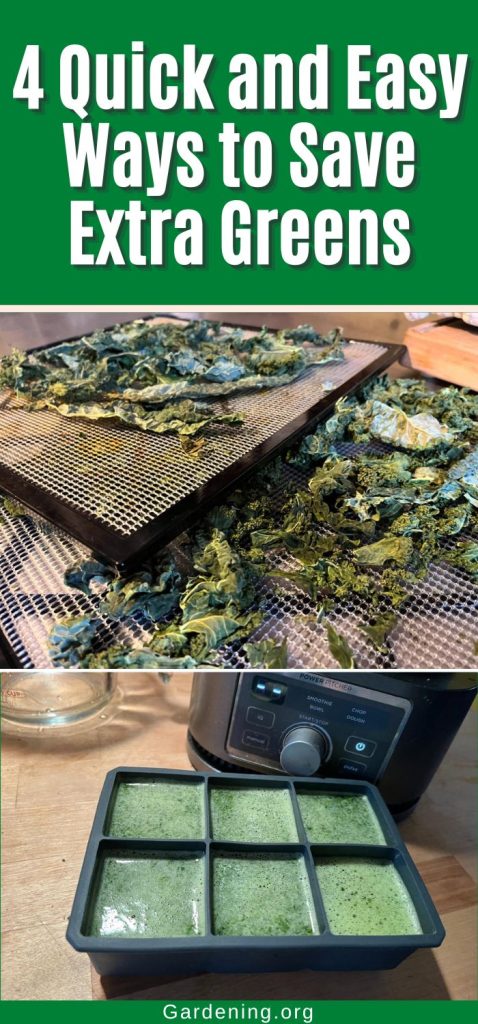
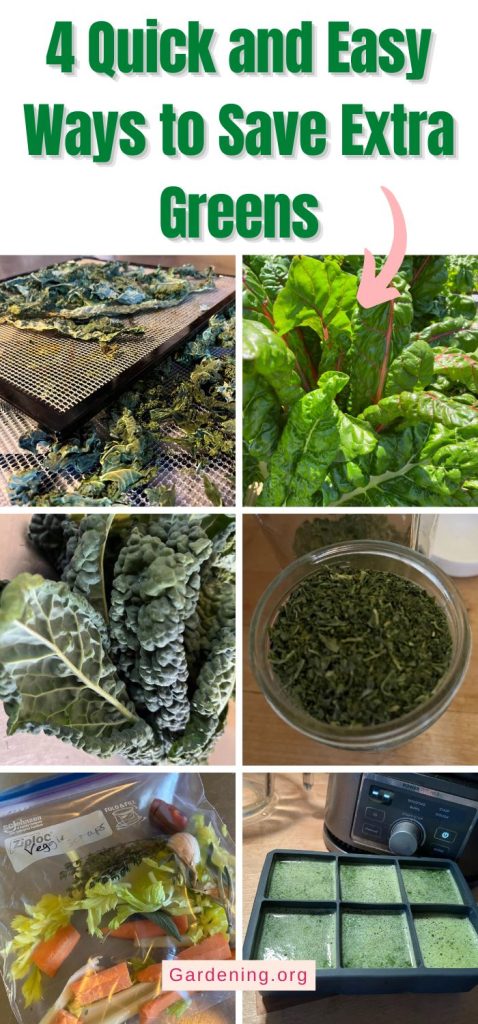
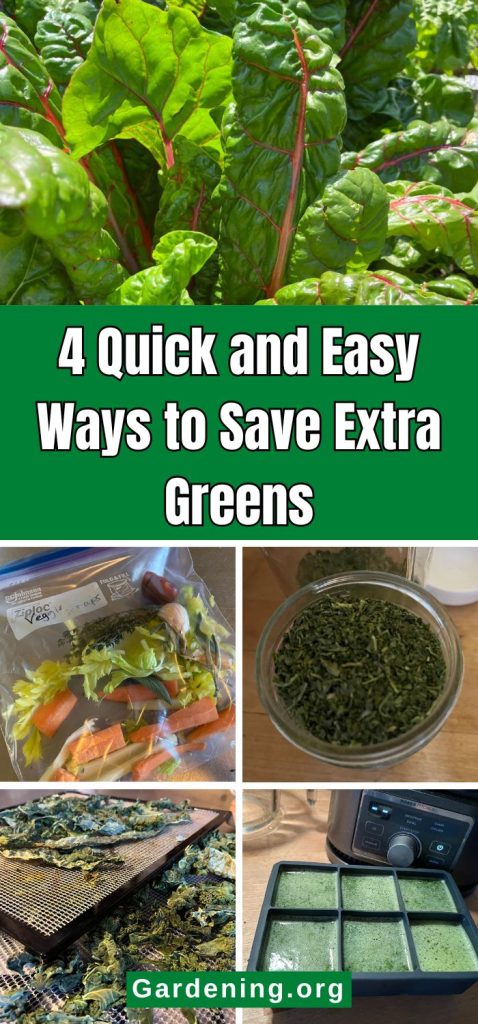

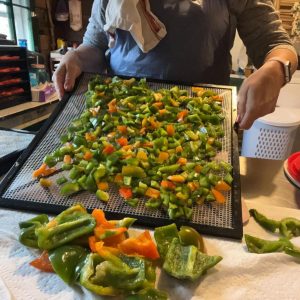
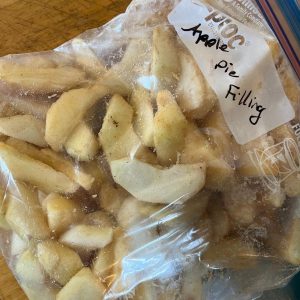
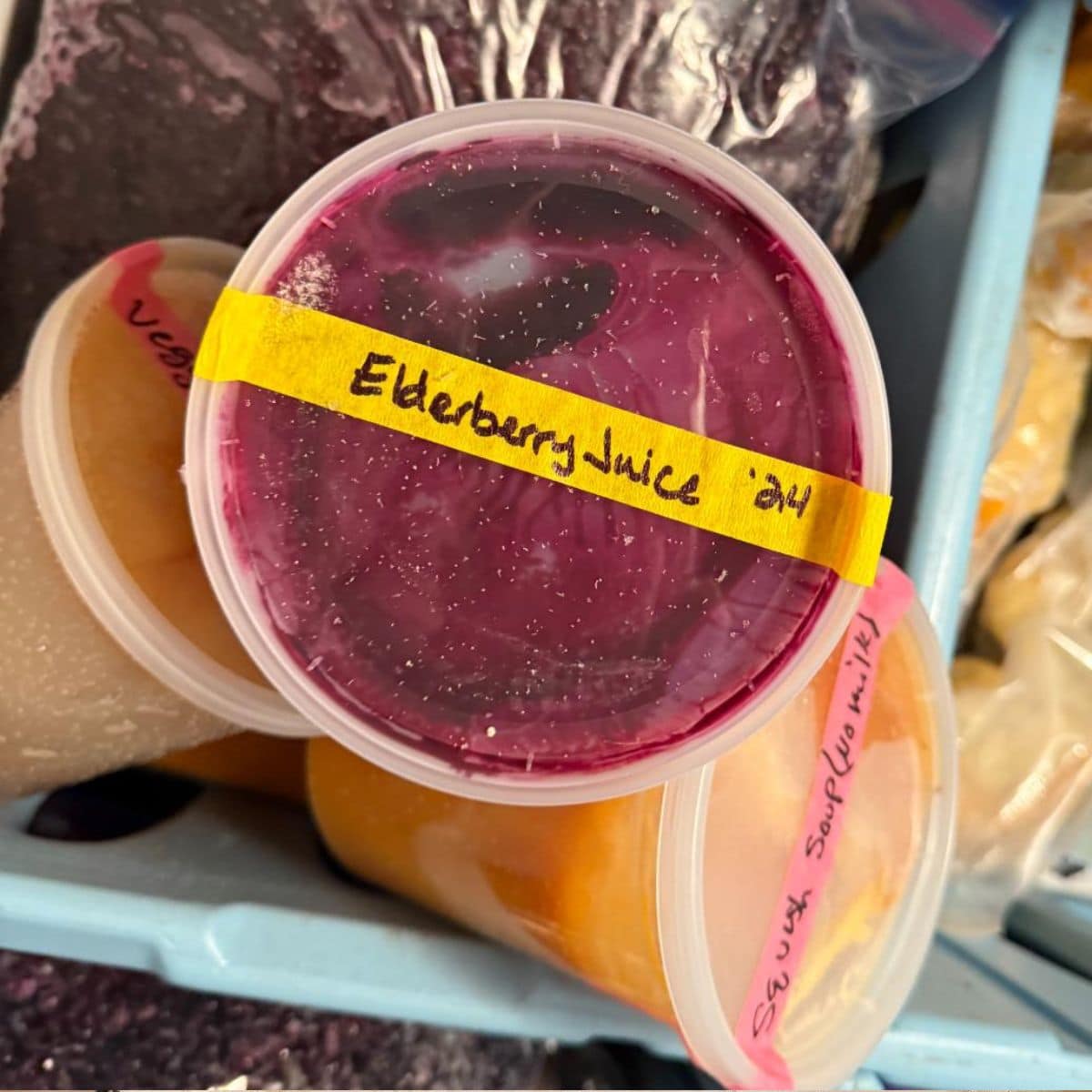
Leave a Reply